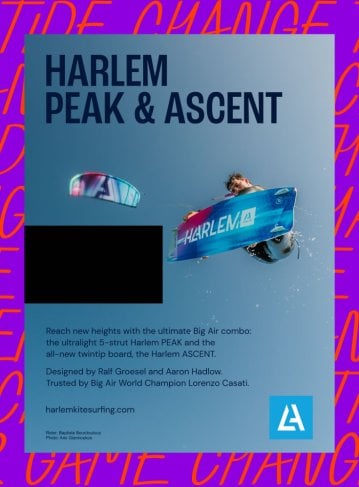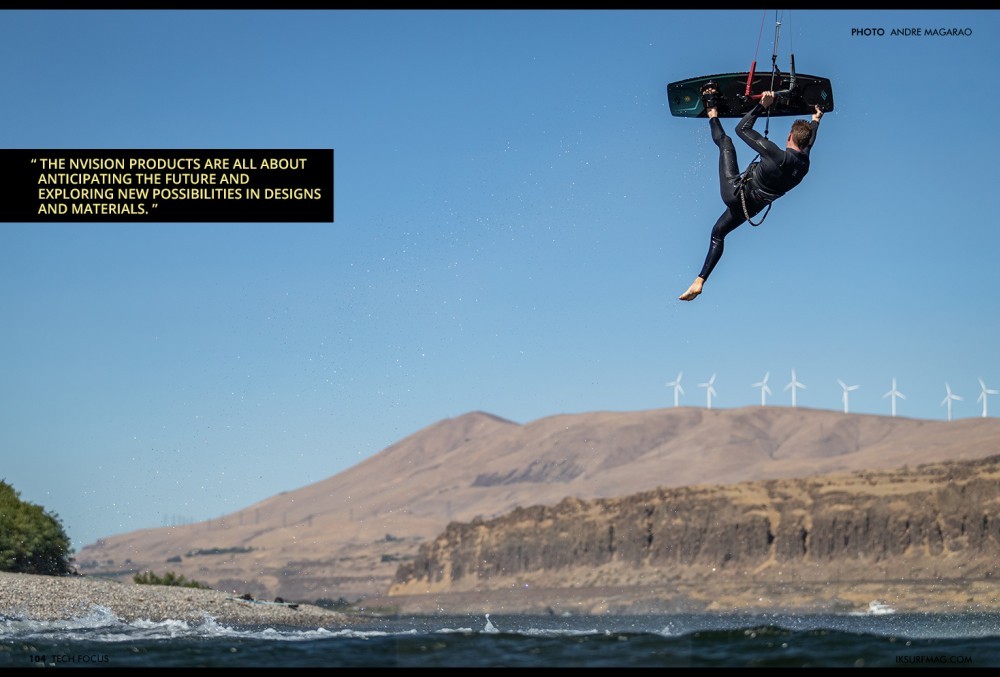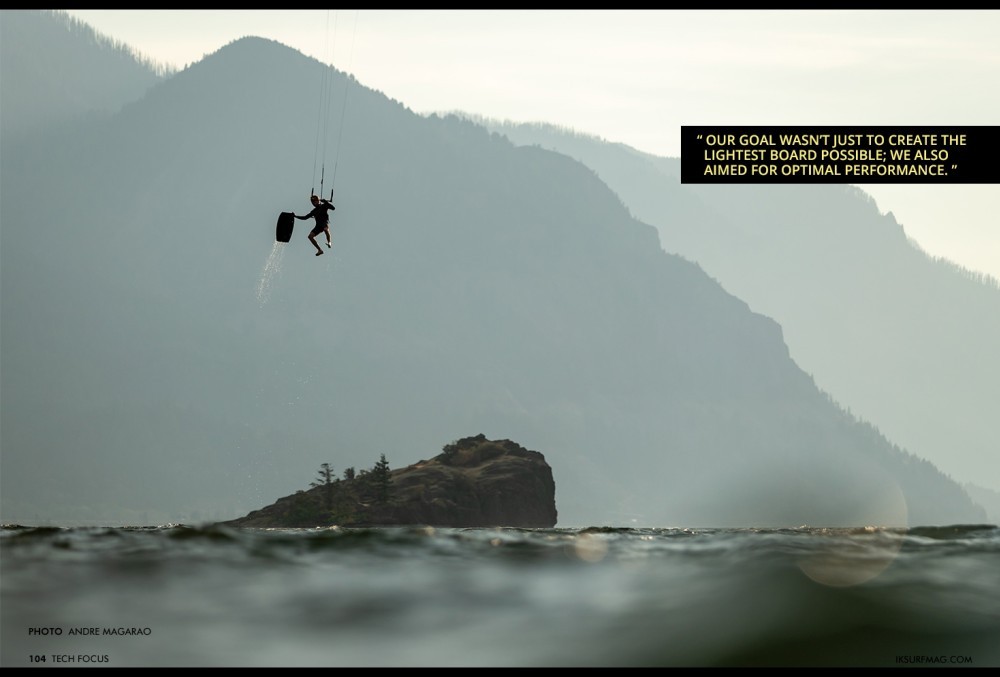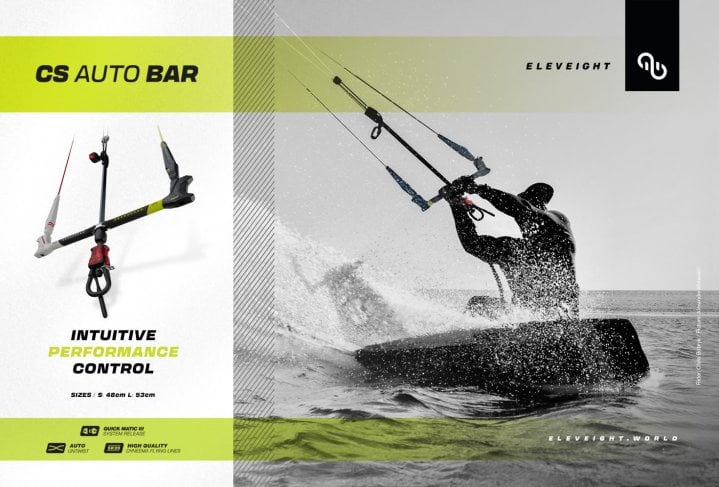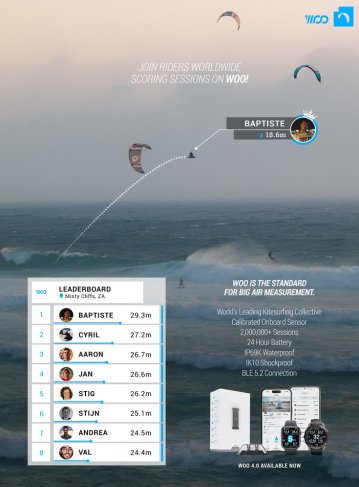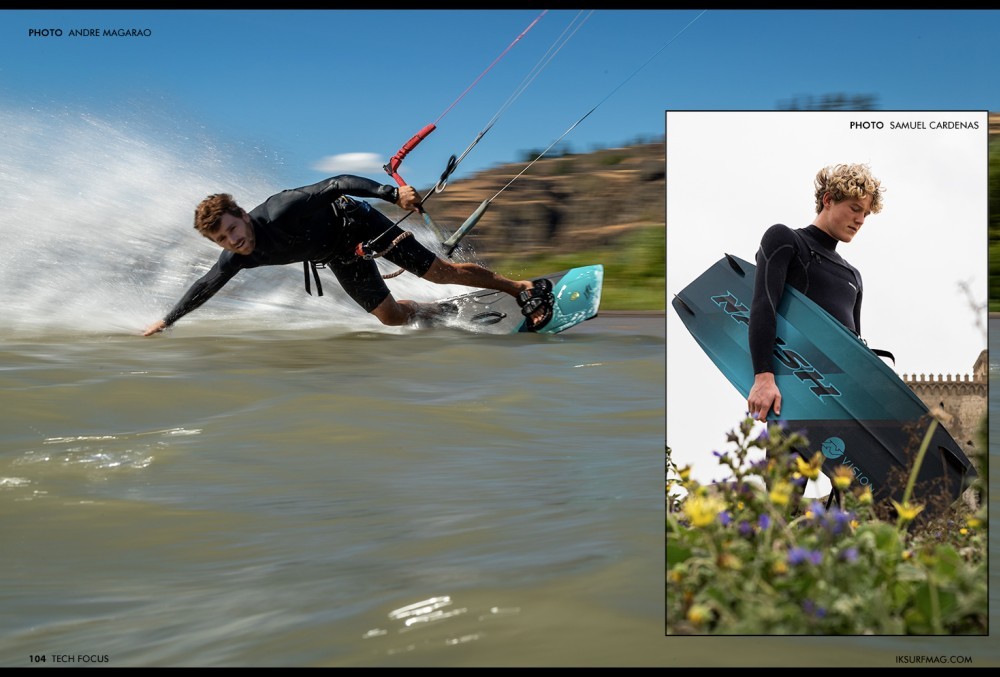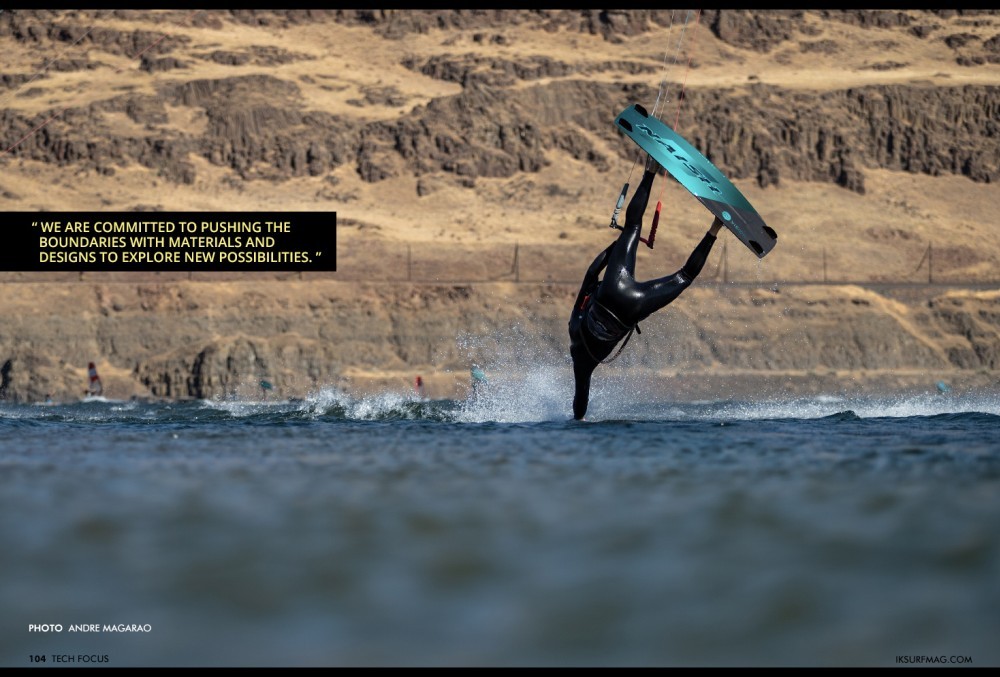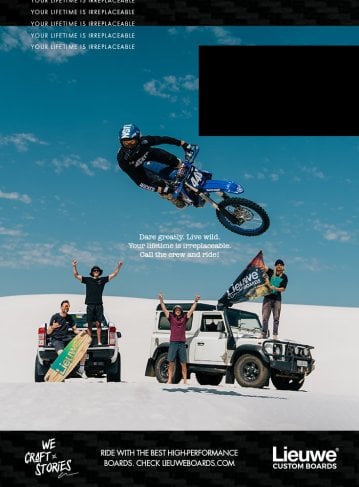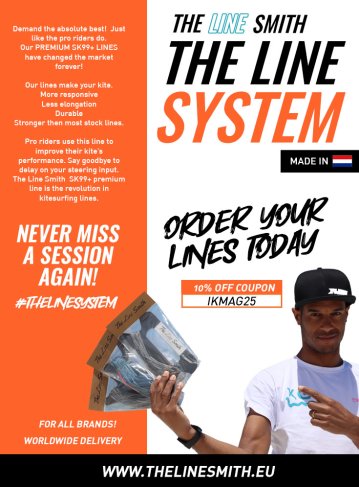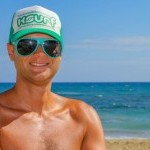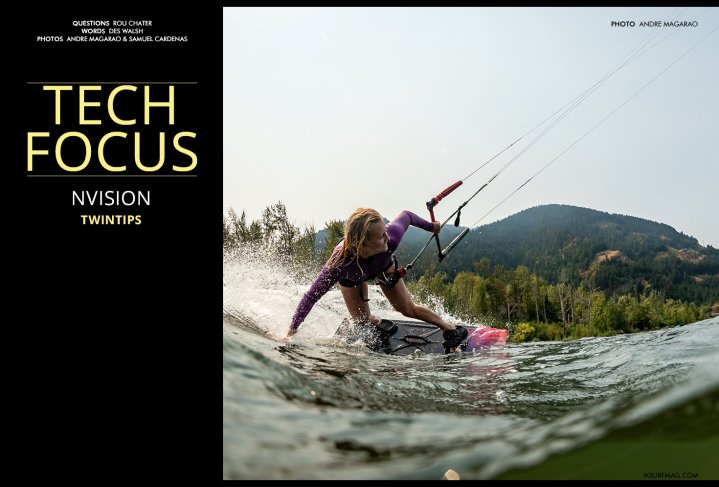
Tech Focus - Nvision Twintips
Issue 104 / Mon 22nd Apr, 2024
Des Walsh tells us all about Naish’s Nvision in this Tech Focus! Naish is committed to pushing boundaries with materials and designs - click here to read all about it!
We’re seeing the Nvision moniker across the Naish range, and it seems to be geared towards lighter, high-performance equipment. What makes the difference for the Nvision twin tips?
Yes, that is correct. The Nvision products are all about anticipating the future and exploring new possibilities in designs and materials. The Nvision Twin Tips uses proven designs and the most advanced materials to deliver the ultimate ride.
Foam was always used in the original kiteboards, and they had a habit of snapping until the wood cores came along circa 2004. How hard was it to use the foam in conjunction with the wood core, and what were the benefits?
Some of the earliest twin tips were crafted with high-density foam cores. Back then, boards were smaller and less wide, often paired with larger kites. Surprisingly, these boards held up fairly well. However, as riders began pushing boundaries with higher jumps and faster and harder landings, pure foam core boards wouldn’t withstand the pressure.
The advantage of employing a hybrid core, combining high-density foam with wood, lies in achieving the necessary strength where it matters while reducing weight in other areas. Different foam types offer varying benefits, requiring thorough testing to ensure optimal performance for each board. Determining the ideal placement of wood and the appropriate amount of foam has been a process of trial and error.
What is special about the 3k Carbon, and how does it differ from standard carbon?
The 3K Carbon stands out due to its specific weave pattern of the cloth and the number of filaments. We chose 3K carbon for these boards because it offer the ideal balance of flex characteristics and durability that we were looking for.
Were you able to get a good balance of flex and torsional stiffness with the new materials?
By carefully adjusting the design and thickness of the board, we achieved a good balance of flex and torsional stiffness. Our goal wasn’t just to create the lightest board possible; we also aimed for optimal performance. Soft flex provides comfort but can limit big manoeuvres. After numerous prototypes and feedback sessions, we found the right balance where weight and performance met expectations. While some ultra-light boards generated excitement, they couldn’t match the performance of slightly heavier ones, leading to a noticeable decline in riders’ abilities.
Why did you choose the Motion and the Alana for the Nvision treatment?
We selected the Motion and the Alana for the Nvision treatment because they are tried-and-true designs suitable for all riding styles and skill levels. Additionally, their flex and torsional stiffness complemented the hybrid core exceptionally well.
How much weight do you save roughly, and what are the performance advantages?
Depending on the board's size, we typically save at least half a kilogram in weight. The lighter weight, combined with the carbon construction, allows riders to feel every subtle movement of the water and experience rapid, reactive flex. If you seek an active ride and want to maximise performance in any conditions, these boards are the ideal choice. Additionally, the Nvision boards utilise the ICP 0.15mm top sheet, further reducing weight while ensuring durability.
Does it take much skill to unlock the performance gains or will the average rider be able to feel the benefit?
Most riders will notice the performance gains immediately. However, it may not be the perfect fit for every rider. In rough water conditions, some may prefer a heavier board that ploughs through chop with less reactivity.
Will we see more boards getting the Nvision treatment in the future?
We may not necessarily see more boards receiving the Nvision treatment in the future, but we are committed to pushing the boundaries with materials and designs to explore new possibilities. The NVISION project is also a challenge for our R&D team to Envision what is possible for the future. Our Naish Vision!
Videos
By Rou Chater
Rou has been kiting since the sports inception and has been working as an editor and tester for magazines since 2004. He started IKSURFMAG with his brother in 2006 and has tested hundreds of different kites and travelled all over the world to kitesurf. He's a walking encyclopedia of all things kite and is just as passionate about the sport today as he was when he first started!



